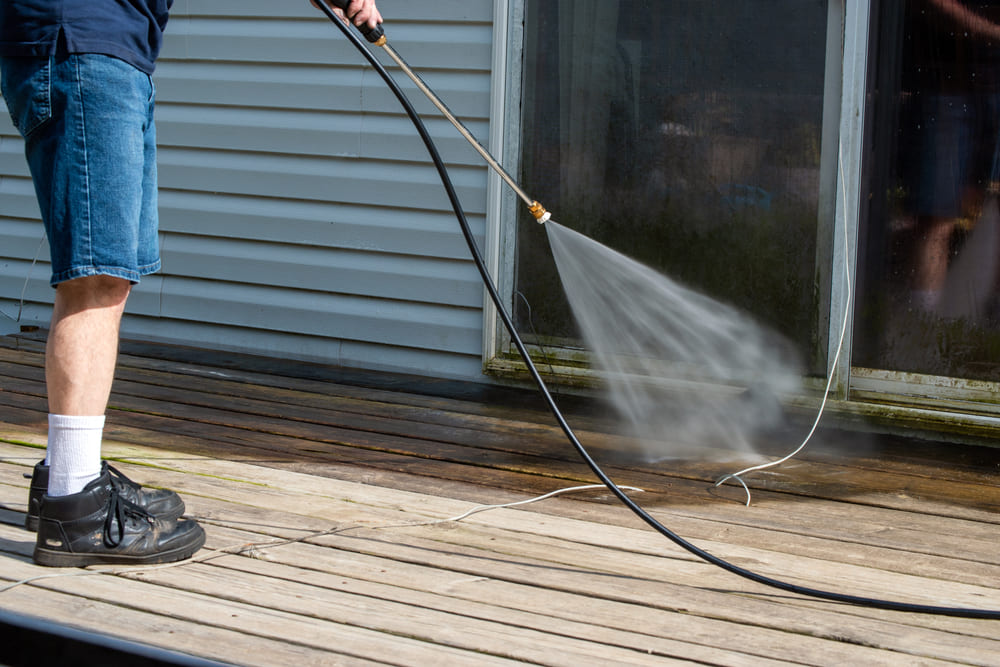When wood decking materials are installed outside, mold is a problem. It will not only discolor the surface of the wood decking, but it will also cause deterioration. To tackle the challenges associated with wood decking, composite decking was developed. And, considering one of the issues with Mould Grow on Composite Decking? This is dependent on the type of trä plast komposit trall you buy. In addition, the frequency with which homeowners maintain their wood-plastic composite decking impacts whether it will develop mold. This article looks at mold as a decking issue and the factors that might lead to mold growth on composite decking.

What Is Decking Mold?
Mold is a kind of fungus. This fungus does not grow alone, but rather in the form of hyphae, which are multicellular filaments. Mold spores drift through the air on a daily basis until they land in the correct places to germinate.
This might be a piece of furniture, a deck, or a fence. One mold may fall on your decking or furniture, feeding on organic resources such as wood and leaves. The distinction between contemporary composite decking and older composite decking is that the former has a protective shell over the surface, whilst the latter does not.
Mold will not thrive in a dry atmosphere. Because the spores will have a hard time germinating, this is the case. Mold, on the other hand, thrives in a wet atmosphere. Mould Grow on Composite Decking leaving a black blotch on your decking or railing.
Mould will continue to decompose until it has completely devoured the decking. Mold is a concern for more than simply discoloration and black stains on decking and fences. Mould will ultimately cause rot in your decking, which can result in major damage and safety concerns.
Keep in mind that mold development is what causes organic matter to decompose in the environment. Mold will continue to decompose until it reaches your decking and finds wood or wood items to decompose.

Will Mould Grow on Composite Decking?
Mold may grow on decking. This is dependent on the type of wood-plastic composite decking you buy. Homeowners who have purchased composite decking materials have recently filed multiple class actions against the manufacturers.
The class action actions are in reaction to the manufacturer’s assertions that composite decking does not develop black stains. On wood plastic composite decking, mold causes dark spots. As a result, as the surface texture of komposittrall darkens, it discolors the surface texture and finally destroys the decking. Homeowners who buy composite decking want to know that it will not mold. Is composite decking, however, mold resistant? Mold damages wood, therefore if you keep your newer generation composite clean, it won’t get mold.
Plastic wood decking is mostly composed of wood dust and polymers. Plastic wood decking is strong.
ger and better than wood decking as a composite, so you can rest assured that it will outlast most of the drawbacks of wood. Mold, on the other hand, is not a common affliction.
Mold eats anything organic that comes into contact with it on the surface. If the mold gets close enough to the surface of your decking, it will eat away at the wood and eventually ruin it. In addition, the frequency with which homeowners maintain their wood-plastic composite decking impacts whether it will develop mold. This article looks at mold as a decking issue and the factors that might lead to Mould Grow on Composite Decking.
Mold will eventually get into the pores of wood plastic composite decking and adhere to the timber, decomposing the decking. As a result, black patches will appear on your wood-plastic composite decking surface. It’s worth noting that this will happen to older composite wood decks. The current generation of wood plastic composite decking differs from the older generation in that it has an additional protective layer on the surface
Mold-resistant Composite Decking
Wood-polymer decking comes in two varieties. The first-generation decking and the newer-generation decking are both susceptible to mold assault. The distinction between contemporary composite decking and older composite decking is that the former has a protective shell over the surface, whilst the latter does not. The protective shell of the newer generation composite decking is made of plastic. The plastic wraps around the wood plastic composite decking board, preventing moisture and mold from getting into the wood. Mold damages wood, therefore if you keep your newer generation composite clean, it won’t get mold.
Conclusion
Does mold grow on composite decking? That depends on whether you choose newer generation decking or older generation decking. Install composite decking with a protective shell on the surface that hides the wooden component.






















![To Increase YouTube Subscribers Must Use These Service Provider [New]](https://businessleed.com/wp-content/uploads/2022/11/To-Increase-YouTube-Subscribers-Must-Use-These-Service-Provider-New-360x180.jpg)













